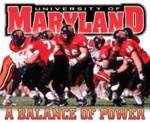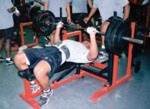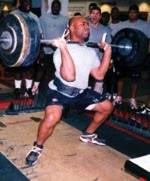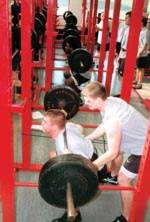UNIVERSITY OF MARYLAND A BALANCE OF POWERFootball Finally Makes its Mark at the University of Maryland, Where Basketball is KingBy Kim Goss Published: Summer 2002 It’s rare that you find a college that is nationally ranked in both football and basketball. And until recently, the University of Maryland was no exception. Known for its outstanding basketball team (the Terrapins recently captured the coveted NCAA Tournament), the school also sponsors a football team that has been struggling to stay above the .500 mark. Until now. Last year the gridiron Terps proved worthy of sharing some of the athletic spotlight when they won the Atlantic Coast Conference (ACC) championship and finished 11th in the Associated Press poll. Along the way they earned a trip to the FedEx Orange Bowl to meet Florida, a team that eventually finished third in the AP poll. The UM Terps, which had not been to a bowl game since 1990, assured their first ACC conference title since 1985 and a major bowl when they defeated North Carolina State on November 17. Only five times has Maryland won ten games in a season, and the last time they accomplished it was way back in 1976. It was also the only time they won seven games on their home turf, Byrd Stadium. On paper, there is no comparison between the 5-6 Terps of the previous year and this year’s championship team. On offense, the 2000 team only managed 22.5 points per game, rushing for 1,365 yards and passing for 2,322. The 2001 team averaged 35.5 points per game and showed a much more balanced attack by rushing 2,428 yards and passing 2,409 yards. On the other side of the ball, the 2000 team allowed 25.8 points per game compared to 19.1 in 2001, and doubled the number of interceptions from 12 to 24, second best in the nation. And the Terps’ fans appreciated their efforts, as indicated by an average attendance of 43,564 per home game, a 27.6 percent increase. Although there were many amazing individual stories on this team, the player who earned the most national recognition was linebacker E.J. Henderson. Henderson’s defensive efforts resulted in his being named ACC Player of the Year, only the sixth defensive player since 1974 to receive this award. With stats that include 150 tackles---28 for loss---and six sacks, Henderson was also a finalist for the Dick Butkus Award for the nation’s top linebacker. Other standouts include Brooks Barnard, a semifinalist for the Ray Guy Award for the national’s top punter, and Bruce Perry, who was a finalist for the Doak Walker Award for the nation’s top offensive back. An even more amazing story is that the team was led by first-year head coach Ralph Friedgen. Friedgen is the only coach ever to have won the ACC conference championship in his first year, and his 7-0 start was the best in the 109-year history of the university. Friedgen’s accomplishments earned him the honor of being selected as the consensus national coach of the year. Getting Serious The road to football victories begin in the weight room, and the Terp’s march was lead by head strength coach Dwight Galt, who has been with the school for 17 years. “We believe in trying to train every area that we think will have an effect on performance on the field, leaving no stone unturned in the athlete’s total preparation for football,” says Galt. “Obviously, the strength and power you’re going to get in the weight room serves as a great foundation, but at Maryland we take it another step further by spending a great deal of time on speed improvement and agility training. In fact, only 50 percent of our conditioning program for football occurs in the weight room.” The weight room where the Terp football team trains includes four basic sections within its 7,500 square feet. The first section has ten power racks, nine-foot-tall structures built with 4’ x 4’ steel. The second section has ten multi-purpose “all-in-one” bench stations that can be used to perform bench presses, incline presses and military presses. The third section consists of ten platform stations for Olympic lifting movements, and the fourth section is a dumbbell area with two lines of dumbbells weighing up to 150 pounds. This year the weight training facilities for all athletes will expand so that this room will be devoted just to football. Galt says his program is basically the same for all positions, “and the only athletes training really differently are the kickers and punters.” For the first 45 minutes of the hour devoted to weight training, the core movements are the same for all players. These lifts include the bench press, incline bench press and military press for the upper body; and the clean, snatch, squat, step-up and lunges for the lower body. Also, deadlifts are performed for eight weeks in the winter and ten weeks in the summer. What did the Terps do differently this year in training? “The biggest thing we did this year was challenge them to a degree that we weren’t sure they would be able to accomplish,” says Galt. “Some of the workouts, some of the intensity---we weren’t sure that they would physically be able to accomplish without overtraining. But they stayed with the program, and by the time the season rolled around in August, they were the strongest, heaviest, fastest team we’d ever had.” When asked what advice he would give to high school players who hope to someday play for Maryland, Galt replied, “One of the biggest problems with high school athletes is time constraints, because many athletes are multi-sport. What we recommend is that the high school athlete try to figure out a way to become more consistent in the weight room, even if it’s only 45 minutes, twice a week. We have many kids from well-established high school programs who come here, and when they come here they just explode---and that’s because we train year-round. That’s why it’s always nice to have athletes from high schools who were on the BFS program---they have a good foundation.” One player whose potential exploded under Galt’s strength training program was junior defensive end Durrand Roundtree. “Durrand is a very special athlete---he’s the strongest player we’ve ever had, both technically and realistically. He weighed 230 when he got here and he’s 265 now at 6’3”.” In the weight room, Roundtree increased his bench from 325 to 490, his power clean from 280 to 355 and his squat from 490 to 760, including a workout in which he made 515 for 21 reps. As for speed, his forty improved from 5.00 to 4.68 (electronically timed), and his vertical jump (no step) increased eight inches from 28.5” to 36.5”. Galt says that it’s easy to recruit at Maryland “because we tell them the truth. Our goal is the maximization of individual athleticism. When a player leaves here, we want them to feel that they did everything they could to be the best player they could be.” |
 |
|
|
 |
|
Head Strenght Coach Dwight Galt says Durrand Roundtree is the strongest player ever at UM with his 490 bench and 355 power clean. |
 |
|
|
 |
|
Squats are a core lift in the Terp's strenght training workouts for football. |
 |
|
Maryland football team "calling it up"at the end of a workout. |
 |
|
E.J. henderson |